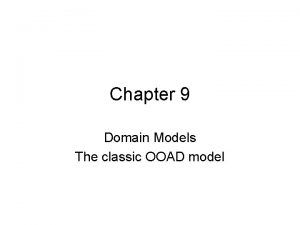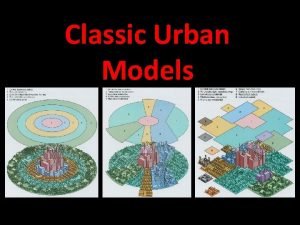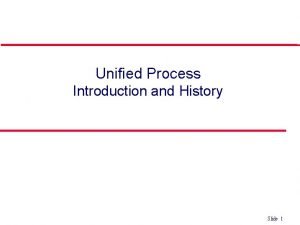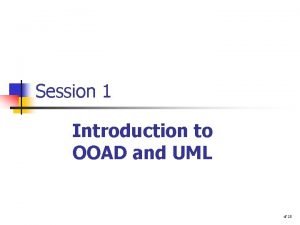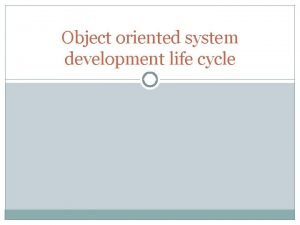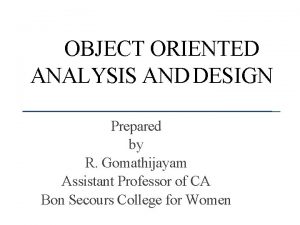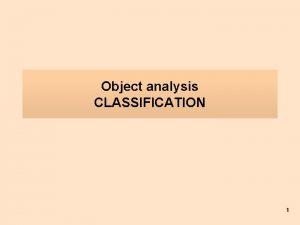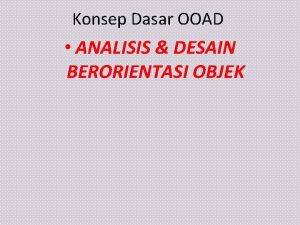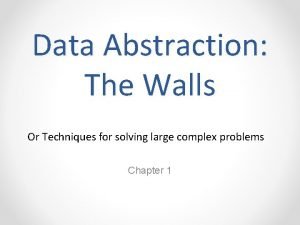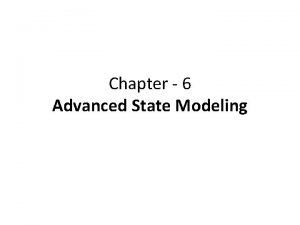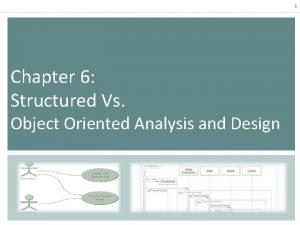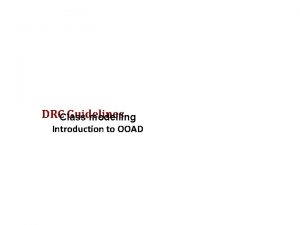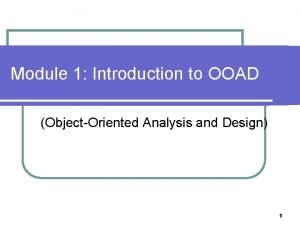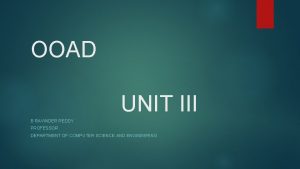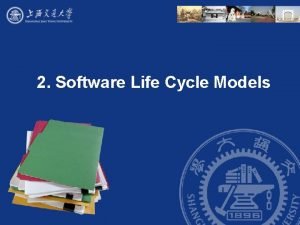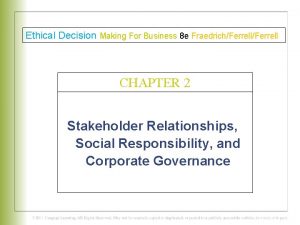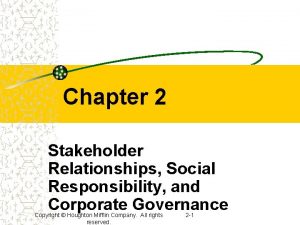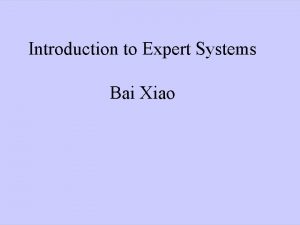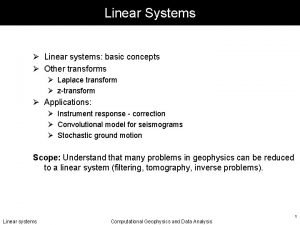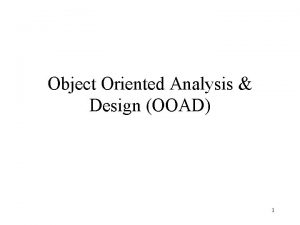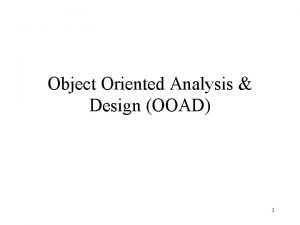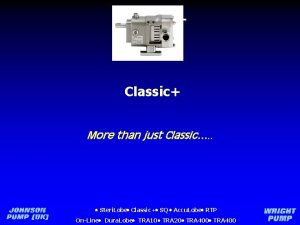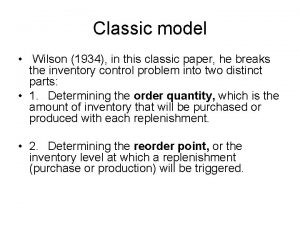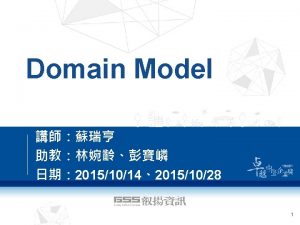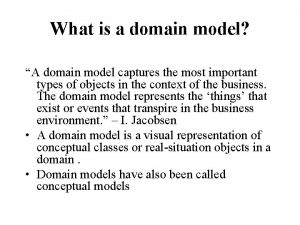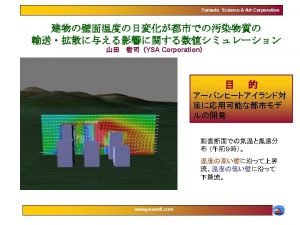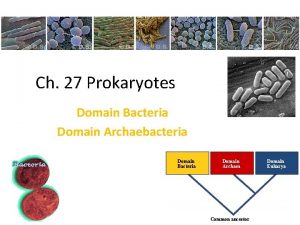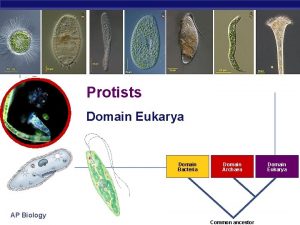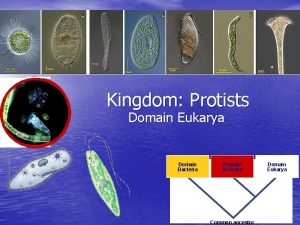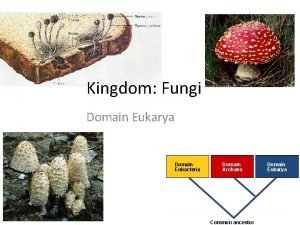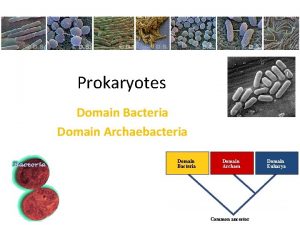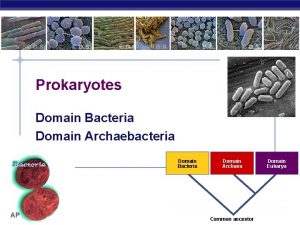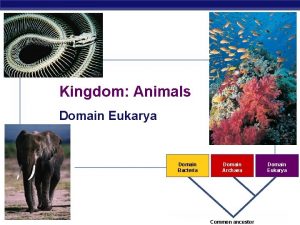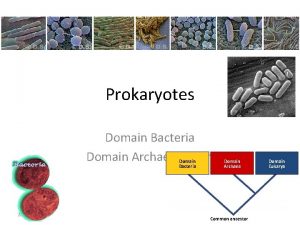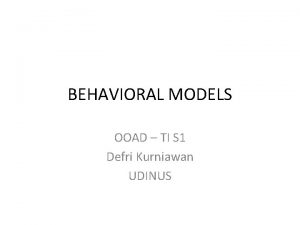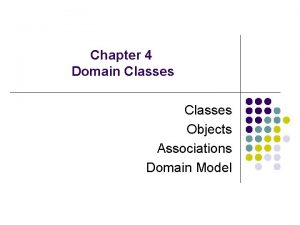Chapter 9 Domain Models The classic OOAD model







































- Slides: 39

Chapter 9 Domain Models The classic OOAD model

Fig. 9. 1

Domain Model • Representation of real-situation conceptual classes • Not software objects! • Model: – Domain objects (conceptual classes) – Associations – Attributes of conceptual classes

Things not in a Domain Model • Software artifacts • Responsibilities or methods • Data Model

Fig. 9. 2

Fig. 9. 3

Fig. 9. 4

Fig. 9. 5

Why? • Understand key concepts of domain – Key concepts – Vocabulary • Lower the gap between representations

Fig. 9. 6

How? • Reuse an existing model – Easier – Less error prone – Many problems are not new • Category list – Text has a table of common categories (table 9. 1) • Noun phrases – Use with care!

Examples using concept list • Fig 9. 7 is POS domain • Fig 9. 8 is Monopoly

Fig. 9. 7

Fig. 9. 8

Guidelines • • • Report objects Think like a mapmaker Modeling the unreal world Attributes vs. classes Description classes

Fig. 9. 9

Fig. 9. 10

Associations • Things that need to be remembered • Use with care • May or may not be implemented in software • Naming: – class. Name-verb. Phrase-class. Name

Fig. 9. 11

Fig. 9. 12

Fig. 9. 13

Fig. 9. 14

Fig. 9. 15

Fig. 9. 16

Fig. 9. 17

Fig. 9. 18

Attributes • Information that needs to be remembered

Fig. 9. 19

Fig. 9. 20

Fig. 9. 21

Fig. 9. 22

Fig. 9. 23

Datatypes • Use simple types • Define complex types where needed – Subparts – Needs operations – Has attributes (e. g. start date) – Units – Polymorphic types

Fig. 9. 24

Fig. 9. 25

Fig. 9. 26

Fig. 9. 27

Fig. 9. 28

Summary – Domain Models • A domain model is used to understand the domain • It is an artifact that is developed iteratively in Agile
 Domain model in ooad
Domain model in ooad What are the 3 models of urban structure?
What are the 3 models of urban structure? Unified process in ooad
Unified process in ooad Ooad
Ooad Object oriented systems development
Object oriented systems development Orthogonal views of software in ooad
Orthogonal views of software in ooad Discuss in detail about object analysis classification
Discuss in detail about object analysis classification Object oriented design tutorial
Object oriented design tutorial Data abstraction and problem solving with java
Data abstraction and problem solving with java Nested state diagram
Nested state diagram Ooad vs oop
Ooad vs oop Perbedaan ssad dan ooad
Perbedaan ssad dan ooad Boundary class in uml
Boundary class in uml Multiplicity in ooad
Multiplicity in ooad Introduction to ooad
Introduction to ooad Katie holmes
Katie holmes Functional modeling in ooad
Functional modeling in ooad What is the difference between model and semi modals
What is the difference between model and semi modals The code and fix model
The code and fix model Objectives of edlc
Objectives of edlc The model is founded in classic economic precepts
The model is founded in classic economic precepts The model is founded in classic economic precepts
The model is founded in classic economic precepts Domain codomain range
Domain codomain range Z domain to frequency domain
Z domain to frequency domain Frquency domain
Frquency domain Time reversal property of z transform
Time reversal property of z transform Z transform of ramp function
Z transform of ramp function Domain specific vs domain general
Domain specific vs domain general Domain specific vs domain general
Domain specific vs domain general Problem domain vs knowledge domain
Problem domain vs knowledge domain S domain to z domain
S domain to z domain The designer expresses the ideas in terms related to the
The designer expresses the ideas in terms related to the Hát kết hợp bộ gõ cơ thể
Hát kết hợp bộ gõ cơ thể Frameset trong html5
Frameset trong html5 Bổ thể
Bổ thể Tỉ lệ cơ thể trẻ em
Tỉ lệ cơ thể trẻ em Chó sói
Chó sói Thang điểm glasgow
Thang điểm glasgow Chúa yêu trần thế alleluia
Chúa yêu trần thế alleluia Các môn thể thao bắt đầu bằng tiếng đua
Các môn thể thao bắt đầu bằng tiếng đua
